Why app performance matters: How to keep users engaged and retained
Imagine downloading a promising app – only to face slow loading, crashes, or lag. Most users won’t give it a second chance. They uninstall and never come back.
In a world of endless choices and ever-shorter attention spans, success in mobile app development services hinges on performance. An app has just a few seconds to impress. Performance isn’t just about speed – it’s about delivering value quickly, consistently and intuitively. This is what keeps users engaged and coming back.
App performance – in terms of speed, stability and efficiency – directly influences retention, reviews, referrals and ROI.
Let’s explore why apps get uninstalled and how to retain app users by some proven user engagement strategies to improve app performance.
Why Users Drop Off: Hidden Causes Behind App Abandonment
1. Slow App Load Times
The first few seconds after opening your app are critical. According to industry data, if an app takes more than 3 seconds to load, nearly 1 in 2 users will abandon it – often without giving it another chance. To reduce app churn, address performance bottlenecks before launch
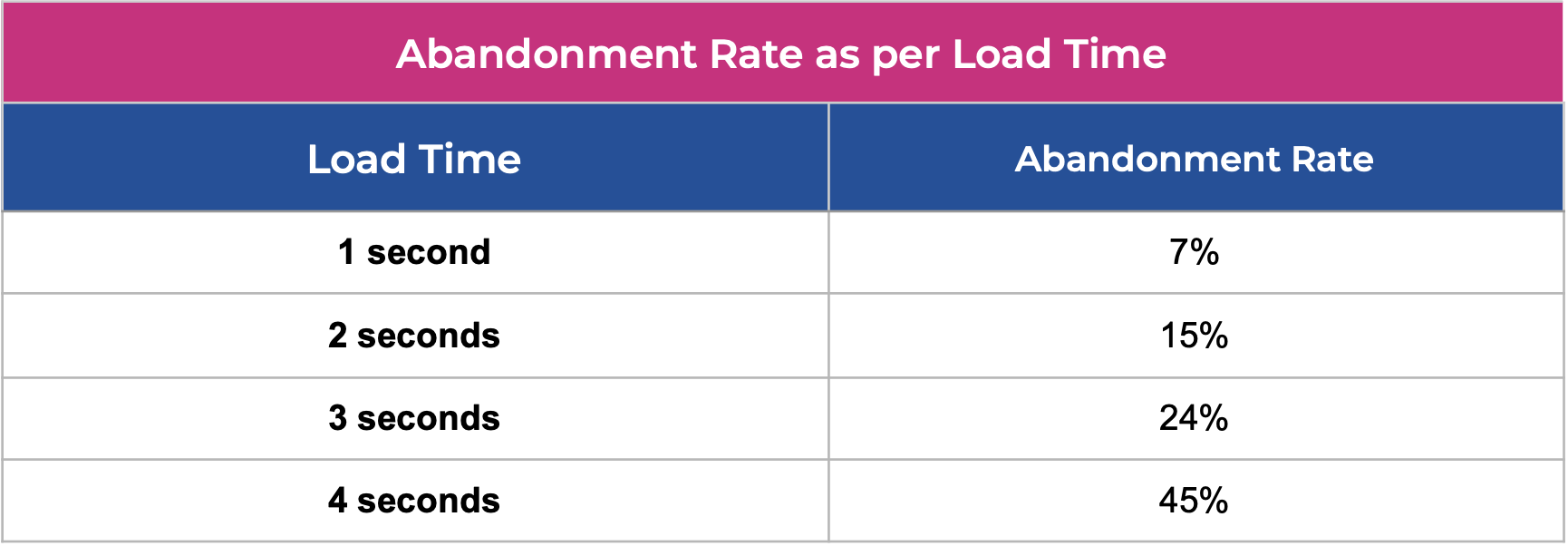
2. Crashes and Freezes (ANRs)
An app that crashes or freezes(Application Not Responding) quickly loses user trust. These disruptions break the experience, trigger uninstalls and lead to negative reviews that damage app’s visibility. Unresponsiveness causes forced exits, frustration and churn.
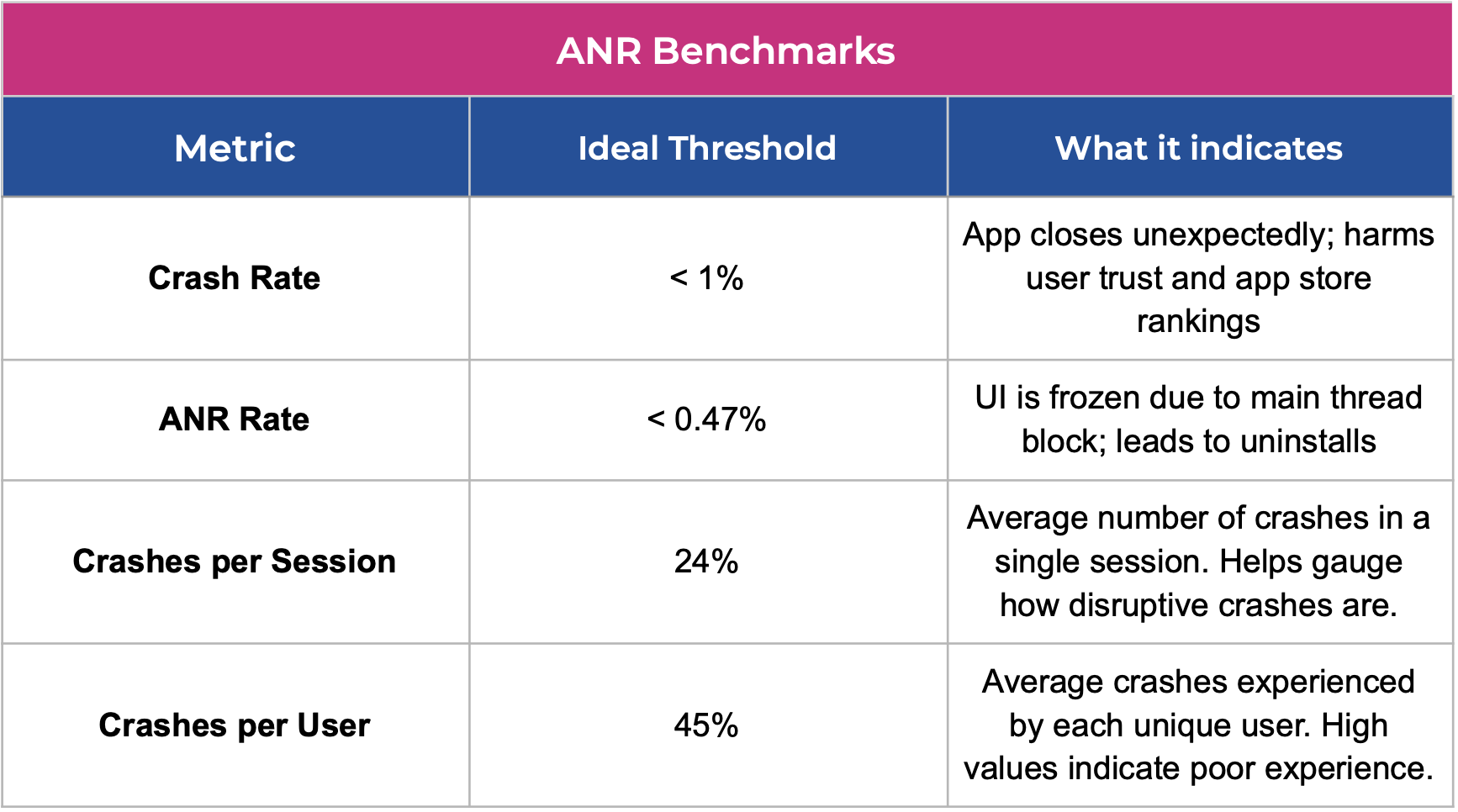
Crash and ANR benchmarks directly influence app performance.
3. Battery and Data Consumption
Users are quick to uninstall apps that are “resource hogs.” Apps that use too much battery, mobile data or memory are often perceived as poorly built – even if the core functionality is good.
4. Laggy or Unresponsive Interfaces
Even if the app doesn’t crash, a laggy interface – jumpy scrolling, delayed taps, slow screen changes – ruins the user experience. These issues are especially common on mid-end and low-end devices, which still make up a large portion of the market.
5. Low Value After Install
Performance isn’t only about speed – it’s about how fast users get to value. Even if the app performs well technically, a confusing onboarding process or unclear value proposition will drive users away. Users need to see value in the first few minutes or they won’t give the app a second chance. Ensure your iOS app performance is optimized by following platform-specific best practices
According to industry averages:
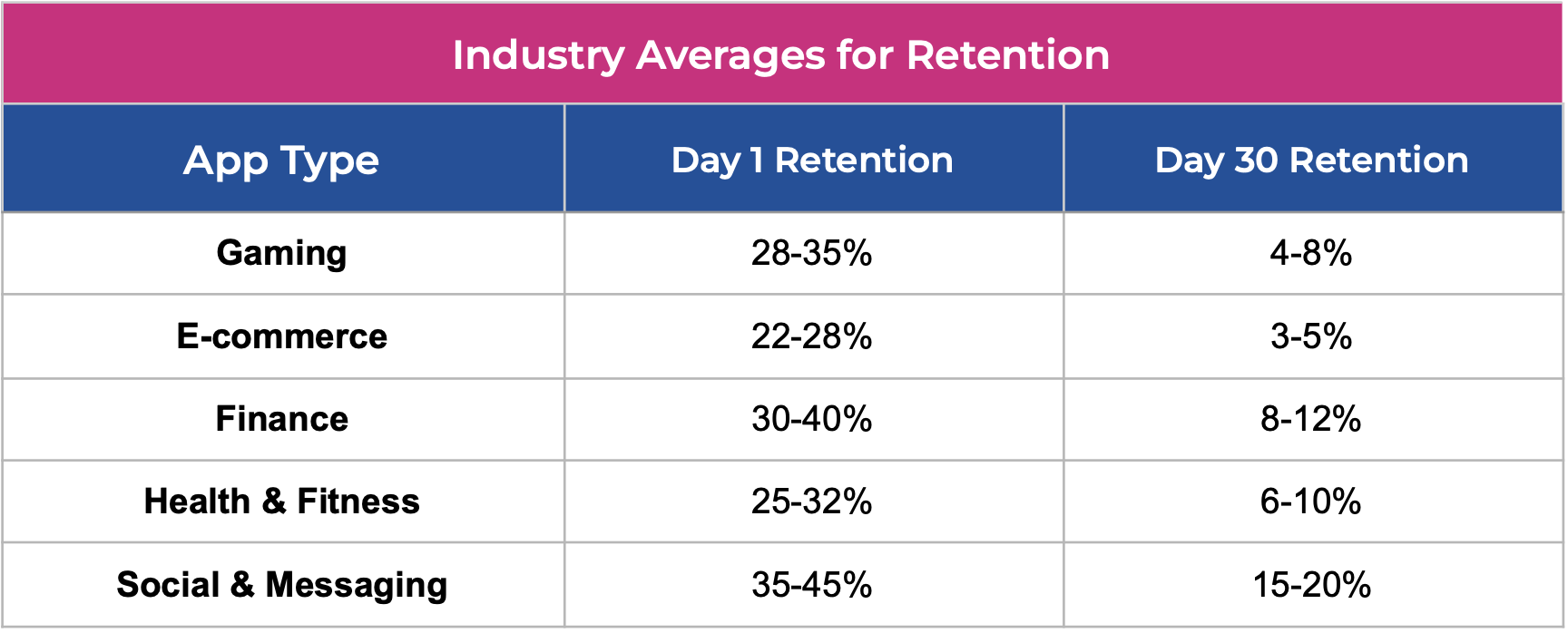
Apps that perform well and onboard smartly consistently see 5–10% higher retention by Day 30.
From First Tap to Long-Term Loyalty: 7 Proven Strategies to Improve Performance and Retention
Building an app is just the beginning. The real challenge? How to retain app users in a crowded marketplace.
In today’s hyper-competitive mobile world, even a slight delay, glitch or clunky flow can push users away. That’s why app performance matters more than ever. It’s not just about speed – it’s about delivering value quickly, reliably and intuitively.
When your app runs smoothly and feels responsive from the first tap, it doesn’t just work – it boosts app user experience, builds trust and earns long-term loyalty.
Here are 7 proven strategies to improve performance and turn installs into retention.
1. Make the First-Load Experience Feel Instant
Users judge apps within seconds—sometimes before interacting at all. That’s why the app loading time impact is huge. A slow launch, delayed visuals or blank screens can cause instant drop-offs, harm trust and hurt user retention.
To boost app user experience, your app must feel ready immediately—even if some background tasks are still loading. Great app performance optimization means delivering a smooth, responsive experience from the first tap.
How to Improve It:
- Lazy load critical content; delay heavy assets and secondary features.
- Use skeleton screens or shimmer effects to simulate a live UI instead of showing blanks.
- Compress resources and remove unused code to improve speed across Android and iOS.
- Cache smartly using local storage or databases like SQLite or Room.
- Preload essential API data during splash or background processes.
- Defer non-critical startup tasks like analytics and push setup until after UI loads.
2. Eliminate Crashes and Freezes (ANRs)
Nothing breaks trust faster than an app that crashes or freezes. These problems make the app feel unreliable and users won’t stick around. Crashes are often caused by poor code structure, blocking the main thread or unstable SDKs – hurting your overall app performance optimization. Mobile app performance plays a critical role in keeping users engaged
How to Reduce App Crashes and Prevent ANRs:
- Move operations off the main thread: Shift network calls or processing to background threads to avoid UI freezes.
- Handle errors gracefully: Use fallback UIs, retry logic, or loaders instead of crashing the flow.
- Audit third-party SDKs: Unstable SDKs are common sources of ANRs or leaks—keep only what’s needed.
- Track mobile app performance metrics: Tools like Crashlytics or Sentry help fix issues early.
- Test on real-world conditions: Simulate low memory, poor networks, and older devices to catch hidden flaws.
Following these app performance best practices helps reduce crashes, boost reliability and build user confidence.
3. Make Onboarding Effortless
Onboarding is where users decide if your app is worth their time. A clunky, intrusive, or confusing flow leads to quick drop-offs. Instead, focus on delivering value fast – this is one of the most overlooked app retention tips.
Guide users to core benefits quickly, without forcing all permissions or sign-ups upfront. When onboarding feels seamless, it helps increase user engagement app-wide and improves first-day retention significantly.
How to streamline onboarding:
- Offer guest login or social sign-in to skip lengthy registrations.
- Delay permission requests—ask them only when contextually needed.
- Use tooltips and short walkthroughs instead of long, skippable tutorials.
- Highlight a clear path to the app’s main benefit from the first screen.
4. Monitor Real-World Performance in Real-Time
It’s not enough to test your app in a controlled environment—real users don’t operate under ideal conditions. They use different devices, outdated OS versions, slow networks and overloaded memory. That’s why real-time performance monitoring is essential. Track key app engagement metrics to see what’s working.
By using real-user monitoring (RUM) tools, you gain live insights into how your app performs in the wild. This helps you catch and fix slowdowns, crashes or network hiccups before they affect your ratings or retention.
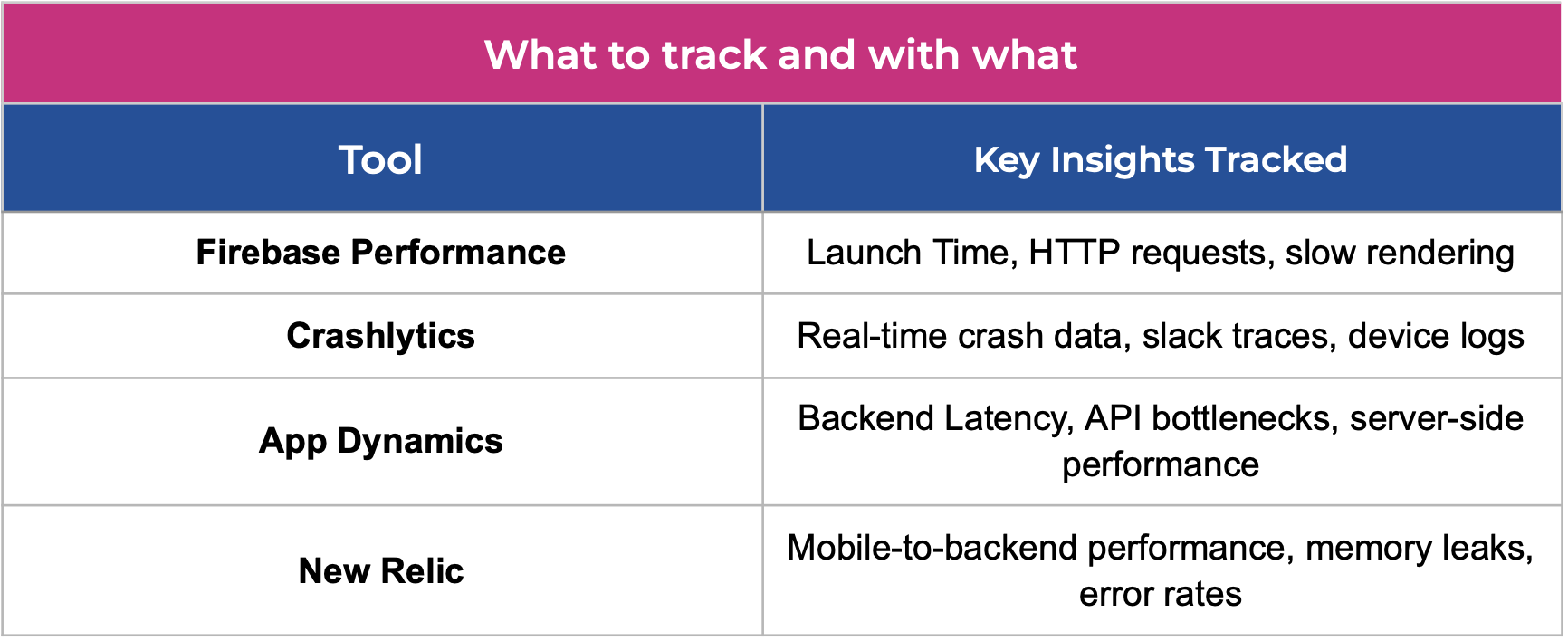
5. Make Every Experience Feel Personal
Users expect your app to adapt to their behavior; not treat everyone the same. The more relevant and responsive your app feels, the longer users stay engaged. Personalization drives relevance and relevance drives retention.
Whether it’s content feeds, product suggestions or UI themes, the more your app adjusts to behavior, the longer users stay. Personalized experiences feel smarter and make users feel seen.
How to Personalize Effectively:
- Behavioural Analytics & Segmentation: Track clicks, searches and usage patterns to understand intent and group users by behavior or demographics.
- Contextual Triggers: Suggest content based on time of day, location or recent in-app actions.
- Dynamic Content & Preference Learning: Adapt feeds, carousels and screens based on usage history and let users like/dislike to speed up personalization.
- AI-Powered Recommendations: Use machine learning to deliver real-time product, lesson or content suggestions.
- Custom Notifications: Send timely updates based on individual goals, habits or engagement streaks.
- UI & Theme Customization: Allow users to adjust layout or themes for a familiar and comfortable experience.
6. Add a Little Gamification
People love to track progress, earn rewards and hit streaks. That’s why adding gamification – even small doses – can seriously boost repeat engagement. You don’t need to turn your app into a game; just reward users for showing up. User engagement in mobile apps often spikes when personalization meets performance
Add features like daily check-ins, progress bars or achievement badges. These taps into motivation and make users want to come back – even if it’s just to maintain a streak.It’s about turning goals into habits and making progress visible. That’s why app speed matters – because lag kills motivation just as fast as it kills trust.
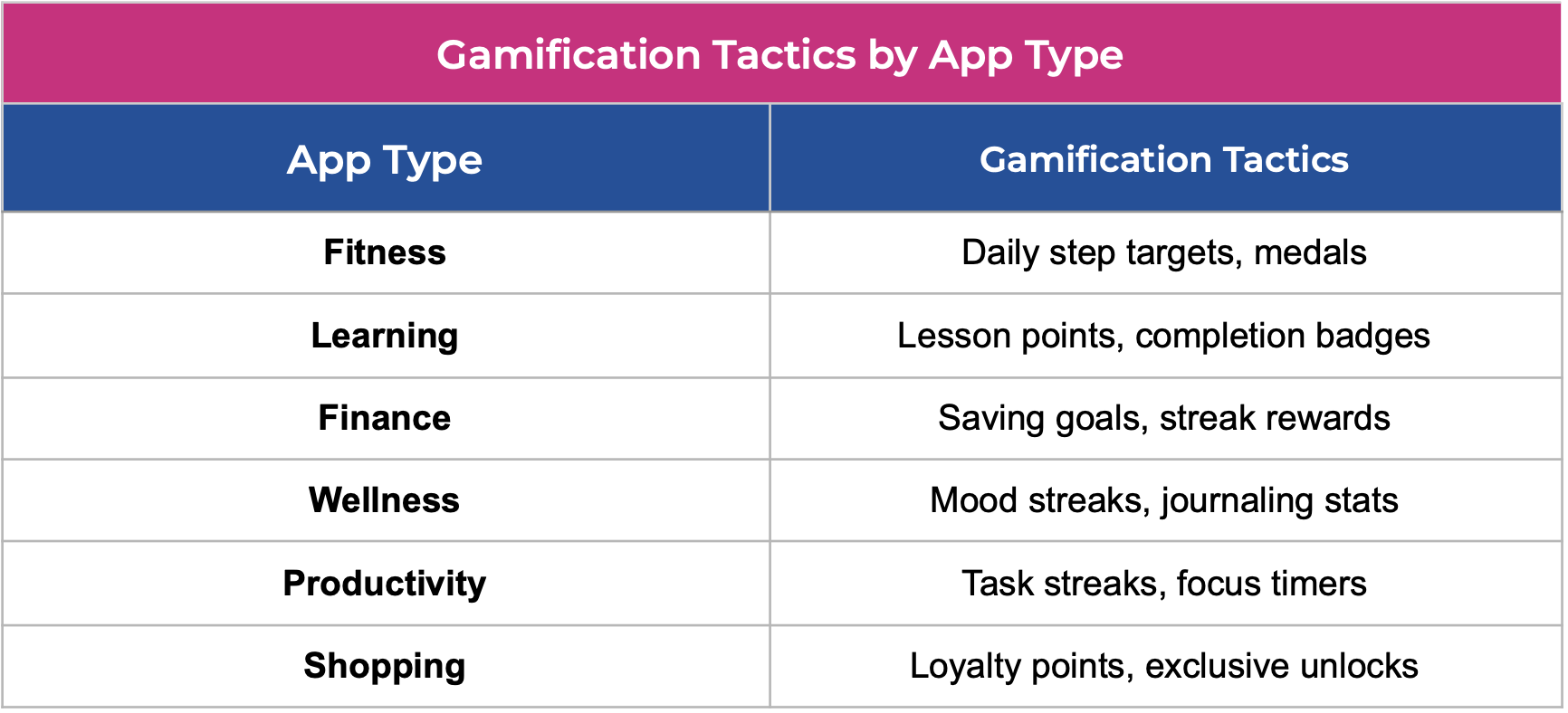
7. Keep Testing, Learning, and Improving
The best apps evolve constantly. Whether it’s a CTA tweak or a login screen update, performance grows through iteration. Regular testing – shaped by user behavior, feedback and real data – helps improve app retention.
How to stay ahead:
- Run A/B tests on layouts, CTAs and onboarding with tools like Firebase Remote Config/Mixpanel – no app update needed.
- Gather feedback through reviews, in-app surveys and chats to understand user sentiment.
- Track behaviour using heatmaps, session replays or funnels to find drop-off points.
- Act on insights, not assumptions – let data guide what to optimize next.
Constant improvements drive engagement and long-term loyalty.
Conclusion: Performance Is the Ultimate Differentiator
After all the strategies, one truth remains: performance isn’t just a feature—it’s your app’s reputation. In today’s crowded mobile landscape, users won’t tolerate lag, crashes or confusion. They uninstall fast and rarely return.
We’ve explored how to improve app performance using first-load optimization, real-time monitoring, smart onboarding and retention boosters like gamification. These aren’t surface-level fixes – they’re app performance best practices that support long-term loyalty.
A fast, stable and responsive app increases mobile app user retention, boosts engagement and builds user trust. Each crash prevented, second saved and barrier removed leads to stronger reviews, better referrals and consistent growth.
Ultimately, keeping users engaged in apps, especially those built through professional mobile app development service requires consistent performance, stability and value delivery. Speed earns trust. Stability builds loyalty. Performance drives retention. That’s how good apps become great products.



